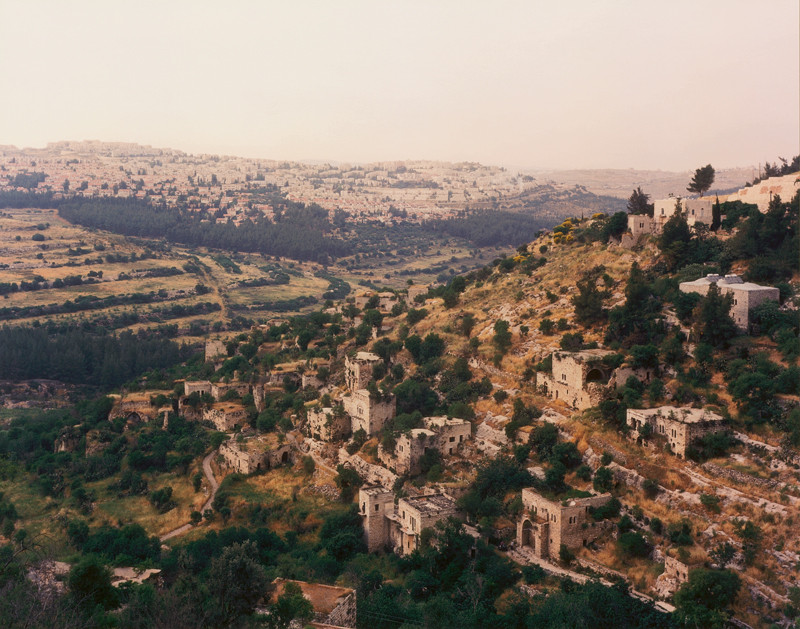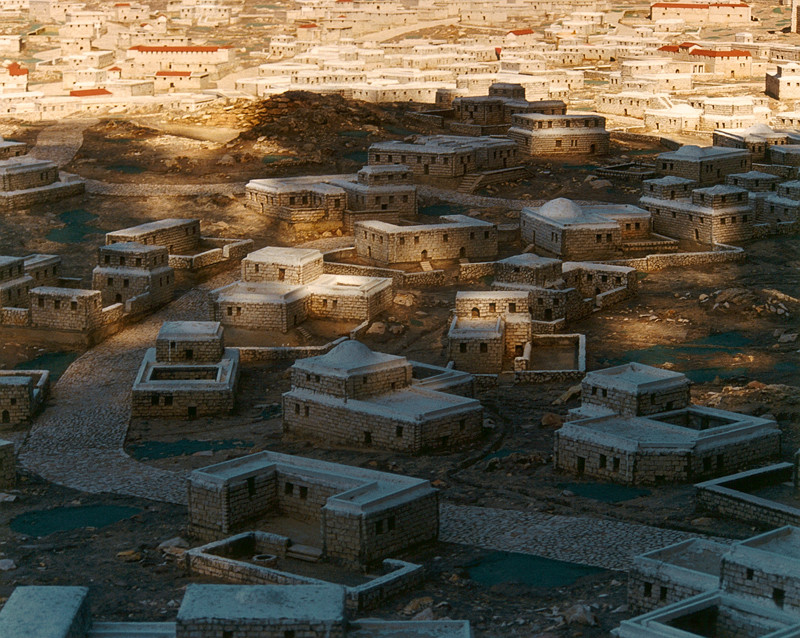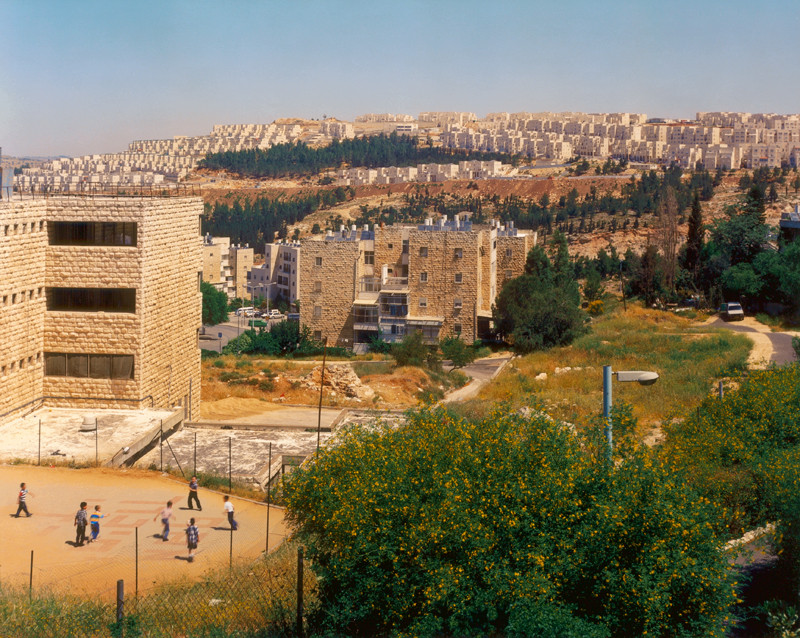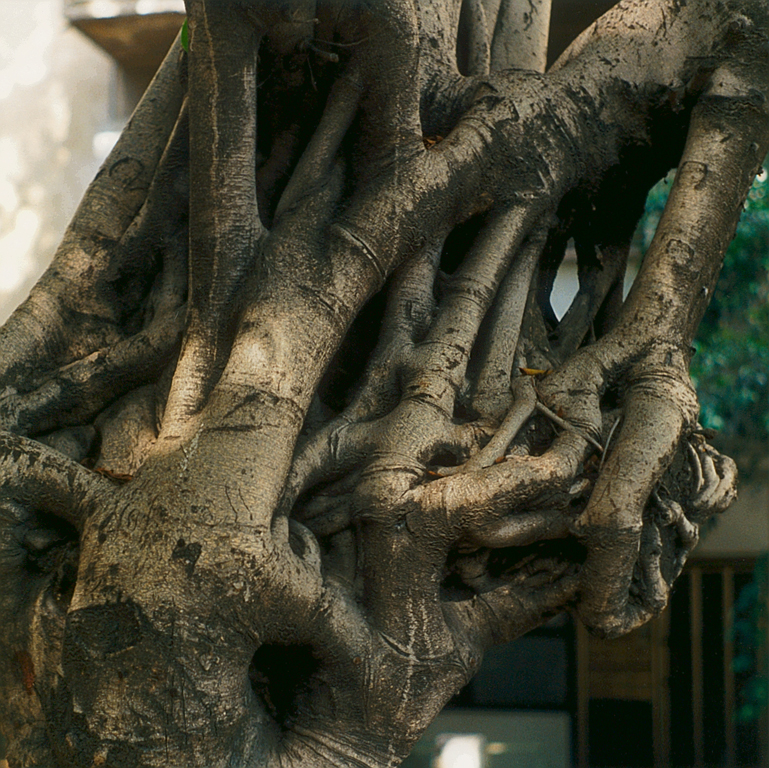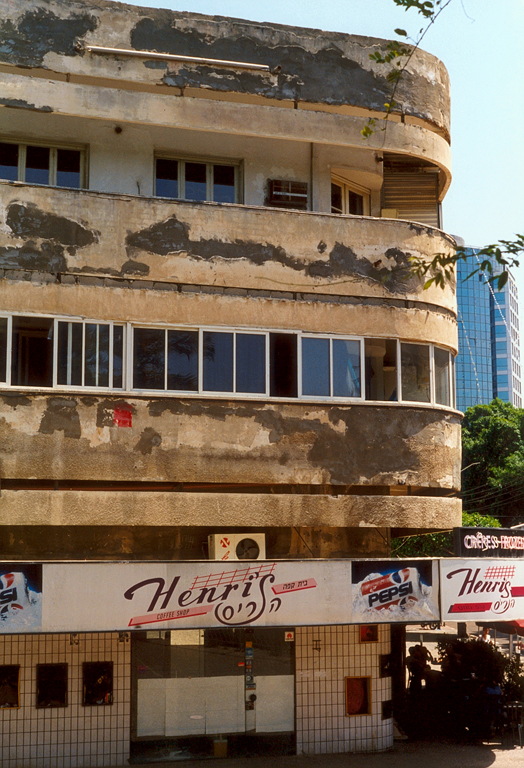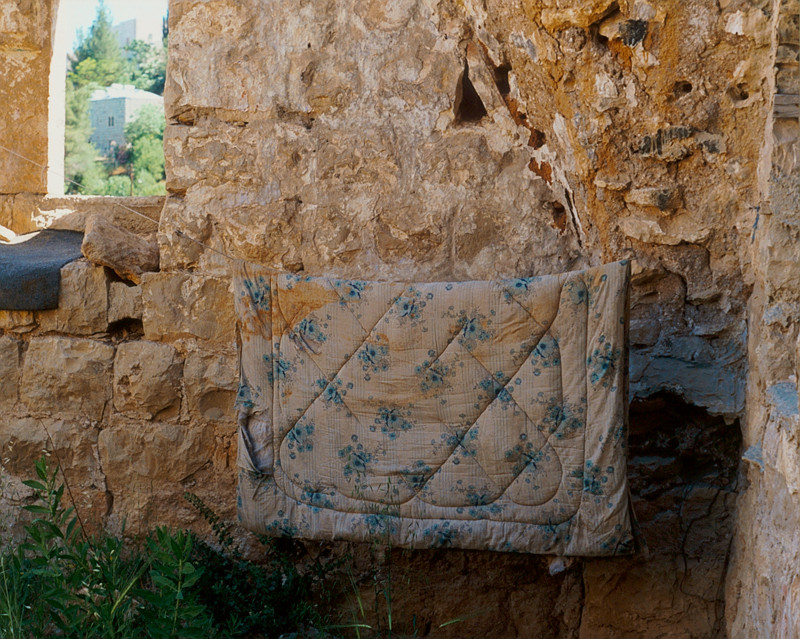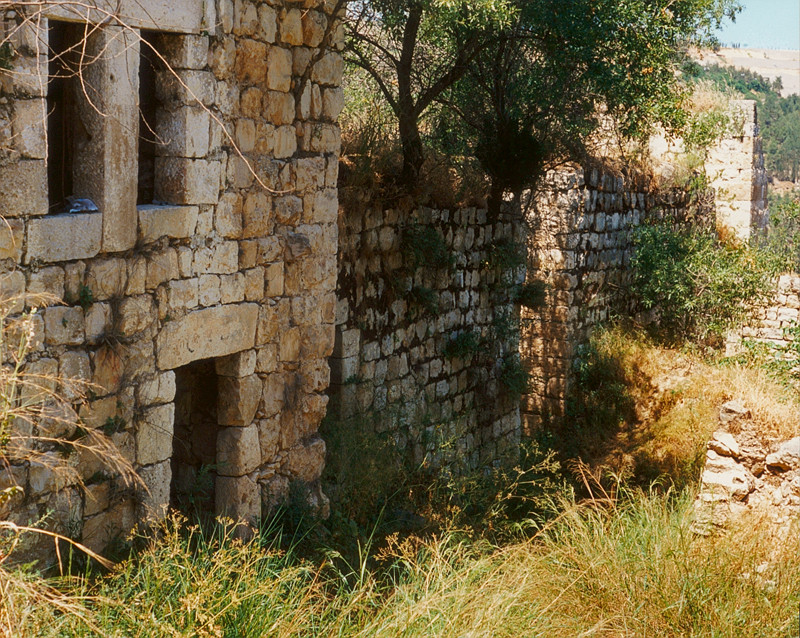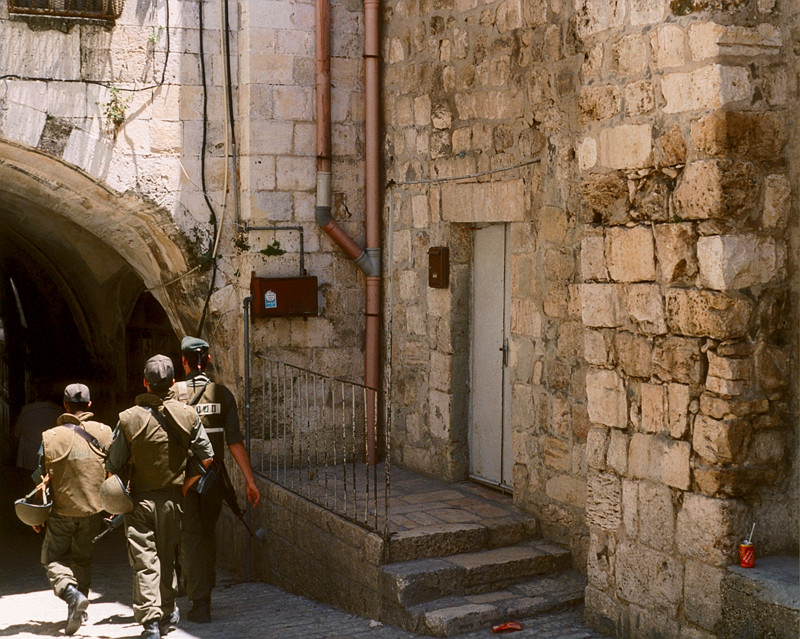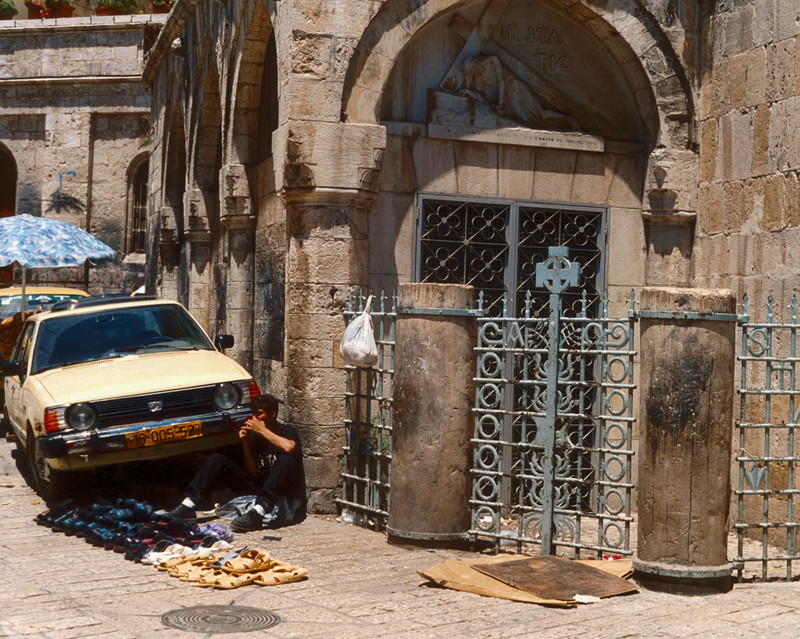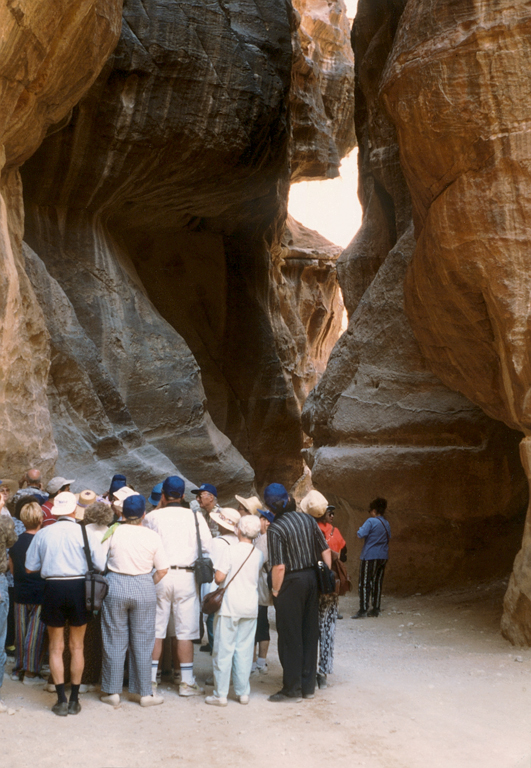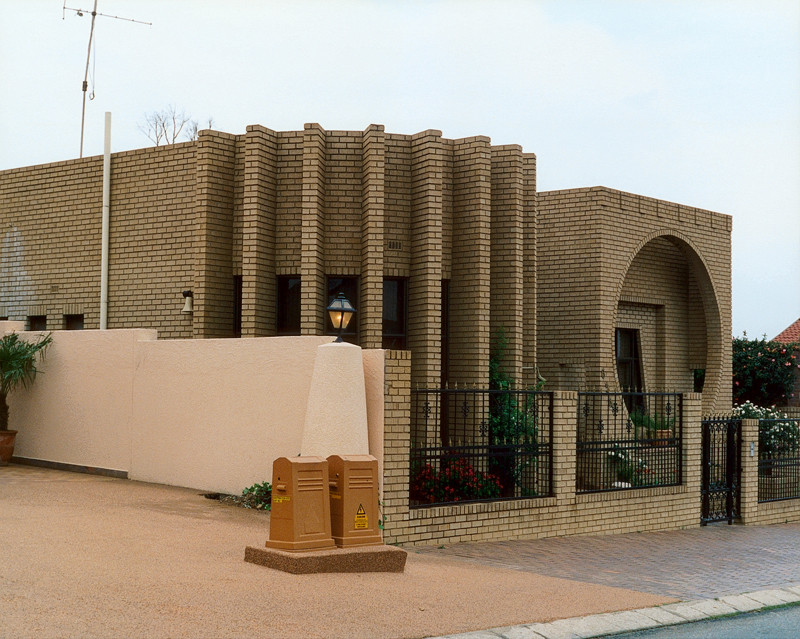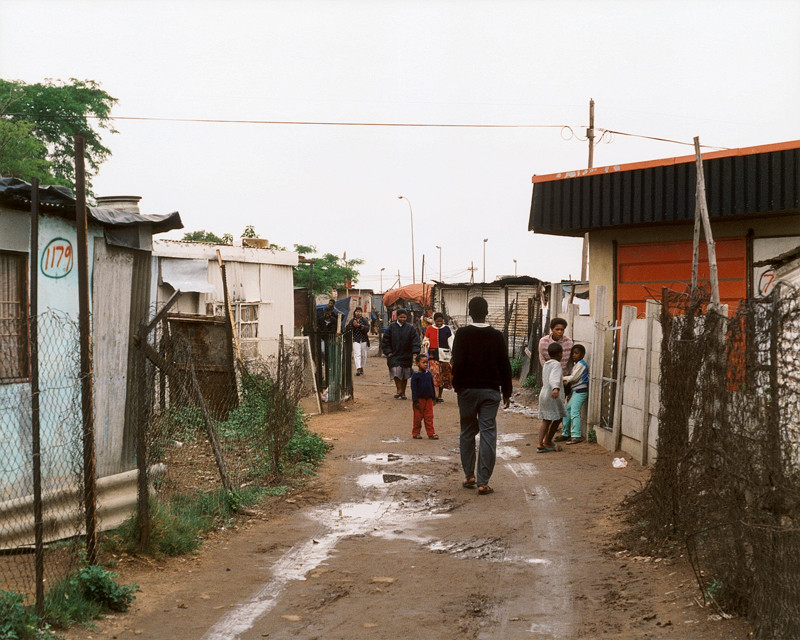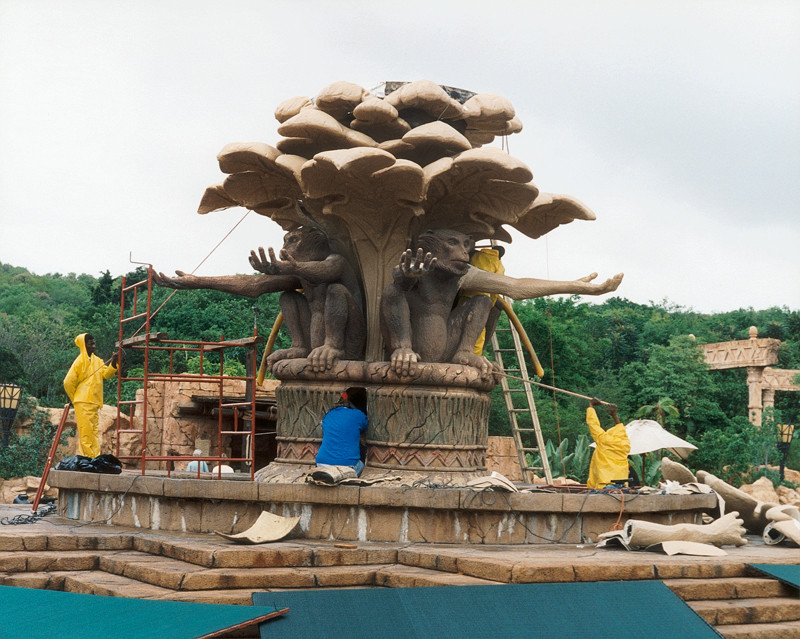[Summer 2003]
In these recent parallel projects – the photographs of Jerusalem’s cityscapes and the Via Dolorosa, the Siq of Petra, Soweto and Sun City in South Africa – notions of pilgrimage and tourism surface as sets of relations between bodies, narrative, and urban structure. The matrices of landscape and architecture elicit through their “picturing” subtle and carefully constructed constellations of power and an illumination of repressed histories.
by Jordan Strom
Given Paul Valery’s belief that architecture could be seen as a process of knowledge that might one day replace philosophy, one wonders what he would have made of the recent photoworks by Arni Haraldsson. Haraldsson is one of several photographers who have, over the past decade and a half, redressed modernism through the “medium of landscape,” and photography through the apertures of architecture.
Known primarily for his work on the “Passaic” topographies of British Columbia’s Lower Mainland and close photographic investigations of the Le Corbusian sites of Firminy and La Tourette in France and Chandigarh in India, Haraldsson’s recent endeavours in South Africa and the Middle East offer both continuations and departures in approach and method. From his peculiar take on the landscape tradition to his specific strategies for subverting and exploiting “architectural detail,” landscape and architecture emerge as a mutually penetrating matrix within modernism’s ongoing conditions of contestedness, entropy, and globalization. That the architectural landscape might be a “process of knowledge” that will one day replace philosophy is a substitution that Haraldsson’s photographs serve to strengthen by their very presence.
Jordan Strom : In all four of these projects, there seems to be an underlying theme of pilgrimage. I’m thinking of the way that modern travel mimics pilgrimage behaviour. And, just as there is a literature of sacred/secular pilgrimage, there is a photographic history. Is this a fair framework within which to look at this work? And was this an intentional focus on your part, or did it come about more by chance?
Arni Haraldsson : My photographing these different places around the world came about in several ways. On the one hand, I was invited, on a couple of occasions, to international exhibitions. This allowed me to travel to these places and take advantage of being there to explore them. On the other hand, it grew out of a particular interest that I had exhausted in Vancouver – that is to say, exploring modernism and then looking around for other examples in other places around the world. So there was a purpose and an agenda with those projects, where I wrote a proposal and traveled and went there. However, these other explorations came about more by happenstance.
JS : What struck me about the Jerusalem photographs were the subtle ways that they avoid the more sensational examples of picture making around this culture. You remain, it seems, more interested in the camouflaged gaps in spatial violence, what the scholar W. J. T. Mitchell has described as a “superficial” – or surface-level – representation of landscape, versus an “archeological” – or depth-oriented – one.
AH : The archaeological model would require a very different kind of approach; it doesn’t really lend itself to the visual. The surface, therefore, is what I am interested in. And the surface contains a part of the ideological and political traces of what is happening in Israel.
JS : If erasure of history through cityscape photography is the common parlance in the construction of any state, you, in effect, play with that language of those constructed vistas. You shift that ground subtly. For example, I’m thinking of your Jerusalem series in relation to the recent Yangtse Gorge photo project of Thomas Struth. With Struth’s work there is a fairly evident developmental grotesque that is revealed. With your Jerusalem series, you play with the camouflaging aspects in these pictorial modes. The violence is there, but more subliminal. The curtain isn’t ripped as wide open.
AH : I suppose my approach is a little bit compromising, in the sense that I am performing a kind of documentary approach, and yet I’m trying to go beyond documentary. In fact, it is something of a problem, because, on the one hand, I am not necessarily interested in making a statement, because I don’t always have a statement to make about these places. I am going there as an outsider, as an observer. And that point of view of the stranger, I think, is important to maintain. At the same time, straight documentary . . . assuming there is such a thing, usually has some kind of agenda. When a photographer chooses, for example, to compose a view from this point rather than from that point, these are decisions that have some bearing on how a place is depicted and, in turn, on how the viewer perceives it. So I try to mediate between these two positions. That is to say, the documentary approach and an individual point of view that has a certain regard for the visible in an attempt to forge, or come to an understanding of, what is happening or being witnessed.
JS: I’m interested in the question of time as it is shaped through the photography of Jerusalem and Palestine. Clint Burnham, in relation to this Jerusalem project, speaks of how “photography and architecture convey the historical through the absence of the signs of time.” What was it like photographing a landscape that has undergone so much recent conflict? What are the forms of absence that occur through these photographs?
AH : Lack of advertising plays a part. In Jerusalem, there is little advertising in the built environment. This functions to place Jerusalem outside modernity in a way, so that it still has its aura of sacredness. And that is compounded when you see elements of the landscape that have been manicured in a very particular way to allude to a kind of biblical pastoral. My photographs of this landscape, I recognized later, harked back to some of the photography of the nineteenth century and those artists that made pilgrimages to the so-called Holy Land, in order to bring this imagery back to the West as a commodity, fulfilling expectations that people had about what the Holy Land actually looked like. Or not. I found myself repeating these vista views at times, but without necessarily intending to. And I think that this says less about my controlling of the image than it does about the landscape, in effect, posing for me. On the other hand, the vantage point from which I took the photographs of the abandoned Arabic village of Lifta falls outside this type of staging of the landscape. Lifta reveals a trace of a history being erased and modified. And it has now been literally erased because it doesn’t exist anymore: a couple of years ago Lifta, which is on the western outskirts of Jerusalem, was bulldozed. But prior to that event, it represented a truly dialectical image, in the sense that it allowed for past, present, and impending future to enter the image, whereby you can see this phalanx of contemporary architecture marching forward from the Ultra-Orthodox suburban development of Ramot . . . with Lifta in the foreground, quite literally receding toward ruin, toward erasure.
JS : And you deliberately chose to combine those landscape shots with 35mm snapshots from inside and around the structures of the old village site. Why was that?
AH : Partly because it was nearly impossible to trek down into this area. I think that is one of the reasons the village had been left intact, because it was difficult terrain. But I definitely wanted to explore and witness it a little more closely, and I discovered this whole other alternative community living there. It was like stepping back in time, into the seventies. They were, for the most part, young people, many of whom were avoiding mandatory service in the Israeli army. Some were from other places in Israel or outside Israel who had chosen to dwell there.
JS : Let’s just talk for a moment about some of the continuities with your work around Jerusalem and Tel Aviv, where one finds some of the first cities to be constructed (back in the thirties) in a concentrated way in the International Style. Having documented largely individual lived versions of this type of architecture previous to this, what struck you most in trying to photograph these particular aggregations of high modernist structures?
AH : Tel Aviv is fascinating in that it is a kind of a living museum of the International Style. One of the seminal influences on Tel Aviv was Le Corbusier. And having grappled with the spectre of Corbu, as it were – in Chandagarh, for example – that was one of the things that drew me to Tel Aviv. Due to various historical trajectories, Tel Aviv ended up becoming this kind of time capsule that contained, in a relatively preserved state, this incredible example of modernism. There were some four thousand buildings erected in the thirties, in a very high modernist style, so it is fascinating to just walk in the centre of Tel Aviv and see that firsthand. What struck me about it, I suppose, is that these buildings were nevertheless in a rather sad state. This surprised me because I had envisioned Tel Aviv as an affluent city – and I think it is, to some extent – but due to climate conditions and also a different kind of sensibility, there isn’t as much of a preservationist concern as there is here in Vancouver, for example. Though subsequently, since 1997, there have been substantial inroads made to preserve some of these buildings.
JS : And this is part of a more international trend that has begun to recognize high modernism as heritage.
AH : Yes. And in Jerusalem, in the neighbourhood of Rehavia, which was built according to the plans of Richard Kaufman in the early twenties, it’s a different kind of modernism. The two cities are very different: Tel Aviv is very relaxed in a way, as it is a secular city for the most part, whereas, with Jerusalem, this sacredness seeps from the history and the landmarks that are there. You can’t help but be subject to it. When you look at the buildings, you begin to deduce something of the character of the city. I tend to think of Jerusalem as an internalized city. It is more fortified. It is heavy, spiritually and otherwise. It’s much more leaden than Tel Aviv.
JS : In your writing that parallels the photo series of Via Dolorosa, or the “Way of Sorrows,” you discuss the influence of the popular anecdotes around the “Jerusalem Syndrome” – the phenomenon where a small portion of visitors to Jerusalem adopt the personages of different biblical figures – in relation to your photo series of that famous walk. Would you care to elaborate on that?
AH : After spending a bit of time in Jerusalem, about two months or so, I was curious to try to capture elements of the city other than architecture and landscape – a landscape that is very hyper in comparison to the type of landscape that we are familiar with here. And part of my coming to terms with the city was to take in the whole of it, that is to say, not just the peripheries, the developments, the schisms that are evident between Israelis and Palestinians that you see ingrained in the landscape. The Via Dolorosa became important for me as a mini-model of Jerusalem itself. It passes through these religious quarters: the Christian, the Muslim, and the Jewish. And it conforms or alters depending on the quarter you are in. In the Muslim quarter, for example, the Stations of the Cross are not indicated as directly as when you are in the Christian quarter or the Jewish quarter. Also, as a kind of spectacle I was drawn to it – partly just to see it as a tourist myself. The Via Dolorosa does become a way of understanding Jerusalem; not Jerusalem itself, but a certain type of image that has been projected onto it by the Western world – especially the Christian world. Finally, a kind of street theatre takes place there that attracts not only the religious, but also people like myself who witness it as a contemporary phenomenon.
JS : I wanted to talk more about how you approached the Petra project – how you decided to take it in the direction that you did.
AH : It was to satisfy a curiosity, to see what the place looked like, since I was in that part of the world. Having arrived there I ended up staying for three days. I felt that the history of the place was a bit beyond me, in fact, its origins are debated. So that part of it I left alone. But as a tourist destination it was fascinating. I observed a number of these tourist buses that would come in with groups from Oklahoma, or other parts of the world. It was interesting to just sit back and observe. As much as I was a part of it, I saw myself outside of it, being on my own. They would usually adorn these coloured hats and move through the Siq, which is this two-and-a-half-kilometre path through this rift – a former river – that leads into the city, with these high cliffs on either side. It was very dramatic, as this processional way builds up anticipation until you actually exit it. And then you were faced with the so-called Treasury, a temple carved right out of the sandstone, in this combination of Egyptian and Greco-Roman architecture. So basically, my approach was in the spirit of a type of neo-conceptualist photo piece. I suppose I was thinking a little bit about some of the work that Douglas Huebler had done in Rome, where he photographed around the Trevi Fountain. In this case, I simply followed this one group of tourists through the Siq from the entrance to the exit. Sometimes I would lose them, and at other times I would catch up with them. I set myself a perimeter – shooting a roll of film from beginning to end using a 35mm camera because it was the most easy and immediate format to work with in that situation.
JS : We had discussed before how Freud had supposed that the most accurate metaphor for the unconscious was the city. And this made me think of your interest in Robert Smithson’s photographic reading of the Hotel Palenque in the Yucatan as an influence on your own. In this vision Smithson saw the building as receptacle, and behind its state of entropy, Smithson seems to suggest, lurks an architectural unconscious rich with unconscious drives. His interest was in where this architectural unconscious slipped through. He photographed these slippages. How does your recent photographic work address this type of phenomenon?
AH : I think it is both productive and problematic to read architecture as indicative of a cultural unconscious. Contemporary signature-style architecture, for example, is certainly difficult to read: it is in the present, I am living the present, I can’t step outside of it, to see it for what it is. Whereas, I feel in looking at architecture from the forties or fifties, or even the sixties, I can step back from it enough to feel that I can read it a little bit more clearly; it’s still very much a part of the present, yet enough time has lapsed to allow for a kind of proximity anyway. I think that with vernacular architecture the unconscious comes through in an even more powerful way, and the Hotel Palanque is truly a kind of vernacular architecture that is not trying to say anything other than that it is functional, but functional in a way that says something about the culture, it speaks to a certain economy, it isn’t perfect, it’s evolving and shaping as it’s being lived in, it isn’t manicured, it doesn’t have an image in that sense.
JS : An ad hoc or improvised quality to it. The scholar Timothy Martin has talked about this as a form of de-architecturalization. Did you witness buildings that operated like this in Soweto? And how do you approach the photography of such processes?
AH : Yes, Soweto is not an architecture that is staged or representative of the state. It’s more everyday, more vernacular. And so therefore, one might suppose that it contains elements or readings that allow for a certain kind of truth to come to the fore – to surface – that more controlled signature-style architecture doesn’t allow for because it’s confined in a way. Recalling Smithson’s Hotel Palanque piece, in Tel Aviv, on Rotheschild Boulevard, I was struck by the way that the banyan trees were constrained, because they would generally have a tendency to take over. A single banyan tree can become a forest. But to confine them to the boulevard, they’ve had to be manicured so that their outward tendency is internalized, whereby they contort and morph into something else, becoming, in this respect, allegorical of the way in which the citizenry is made to conform to certain laws and ways of behaving. It’s not just particular to Tel Aviv; any city is like that. But in Tel Aviv, these banyan trees spoke to that.
JS : How did your South African visit come about? What led to the absence of examples of architectural modernism, and more emphasis on Soweto?
AH : I was invited to participate in the 2nd Johannesburg Biennale. That led me to explore elements of Jo’burg as a city – specifically Soweto, which presented itself as a little more accessible in that I had a guide. Jo’burg certainly had examples of modernist architecture that I wanted to photograph. However, that didn’t end up becoming the focus. Jo’burg was a little too dangerous to explore on your own. Soweto and Sun City have less to do with modernism, in terms of architecture, but they certainly have a lot to do with the contemporary period, of which modernism is still a part. It’s not so much that I’m looking at modernism with nostalgia, but more in terms of how modernism has overlapped with and lingers on in the present. I’m trying to integrate the tourist experience into it. So that, for example, travelling in South Africa, I am a tourist as much as I am a photographer with a particular agenda or purpose. It is about constructing a particular reception or reading. In Soweto, I was conscious of a type of exploitation photography that one could easily lapse into. A counter-model might be a kind of clinical photography that could be read in an equally unproductive and negative way.
JS : It seems that all of these projects have – to a greater or lesser degree – an interest in the blurred boundaries between model and reality. It’s touched upon in the Jerusalem series with the realistic artifice of the Jerusalem hotel model or in the way the Via Dolorosa might act as a model of Jerusalem in miniature. The final project – Sun City – also relates to modeling, in the sense that not only is it a place modeled seemingly on the American theme park and that architecture’s fascination with mythic origins, but also the way Sun City has been viewed by some as a successful model of fortified business and leisure in “postcolonial” Africa. Your photographs of the vacant Royal Amphitheatre and Elephant Atrium bring this point home. The photographs present imagery that points to an absence in an architectural style reminiscent of classical types designed for inclusiveness and public forum. What struck you most in photographing this site? Did reality come closest to being like a model of itself here?
AH : Sol Kertzner’s Sun City, a couple of hours outside Johannesburg, was designed as a sort of theme park for adults, a haven offering gambling and erotic shows – basically Las Vegas–style entertainment, featuring the likes of Wayne Newton or Phyllis Diller. When I was there, Michael Jackson was rumored to be in the area, offering his services for some undisclosed sum as best man at somebody’s wedding. Essentially a product of the apartheid regime, it inspired a protest anthem in the eighties, “Ain’t Gonna Play Sun City,” penned by Bono I believe. It’s a surreal place, especially in the off-season, when it’s raining and there are few people about. More dystopic than utopian. The architecture is pure fantasy. The Palace of the Lost City, for example, is adorned with dozens of animal sculptures which are not so much monuments of the life-spirit of the animals that they represent as they are a celebration of the domination of nature. Perhaps models, and by extension representation in general, operate in a similar manner, allowing for, by way of mediation, a mastery of things. Curiously, what impressed me about these photographs, in retrospect, was how the medium reduces different textures to the same surface, so that the simulation is in fact enhanced. A limitation of the photographic medium, perhaps, but, like the false façades of Sun City, that is also part of its fascination.
Arni Haraldsson was born and raised in Reykjavik, Iceland. Since 1979, he has been based in Vancouver. In 1990, he obtained an MFA from the University of British Columbia. He is currently an associate professor of photography at the Emily Carr Institute of Art and Design. Over the past decade he has been exhibiting his work nationally and internationally, and is included in various public and private collections. He is represented by Catriona Jeffries Gallery in Vancouver.
Jordan Strom is a curator and writer living and working in Vancouver. He has organized several art exhibitions at the Xeno Gallery since its inception in spring 2002.

